I love all life and I’m sure if you’re reading this you don’t need any explanation as to why helping wildlife is a good thing. Frankly, we don’t need to justify doing the right thing to save animals and insects, they matter. If you’ve ever stared at a robin and wondered who is assessing who more, a ladybird landed on your nose or butterfly on your shoulder, you’ll know how funny and enjoyable wildlife is. Everything I do in gardening is wildlife friendly, from garden design, our own patio to my wildlife allotment. Over the last five years I have quickly and easily increased the amount of wildlife on my allotment, it’s amazing, and by following my simple steps below, you can too.
1) Stop using chemicals
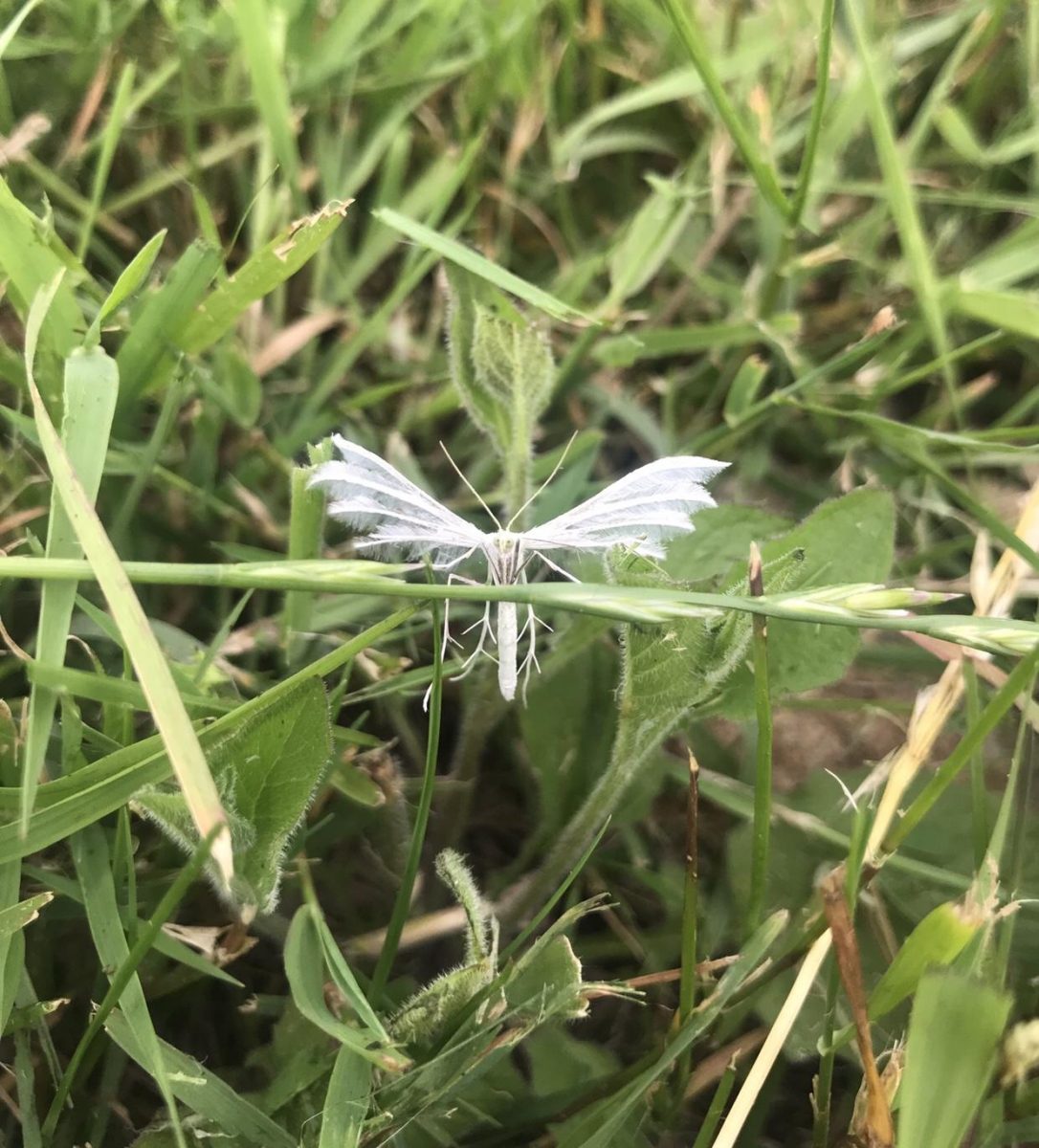
It goes without saying that to encourage wildlife onto your allotment, no longer using pesticides that kill them is the best thing you can do. This includes using fungicides which research continues to show enters the natural ecosystem affecting it often detrimentally in a number of ways. With so many professional gardeners and famous public gardens now completely organic, proving it works, there is no longer any need to use chemicals on your allotment.
2) Grow more weeds
I go into this in more detail in by book, Wild about Weeds, but I believe we are too quick to remove weeds from our allotments and gardens, when they’re often beautiful and have wildlife value. Such as the above bees feeding on hawkbit and achillea weeds. You can designate a specific wild area of your allotment (see next point) or, do as I do, and get to know the weeds, leaving some of the less troublesome ones to grow among your vegetables.
3) Go native
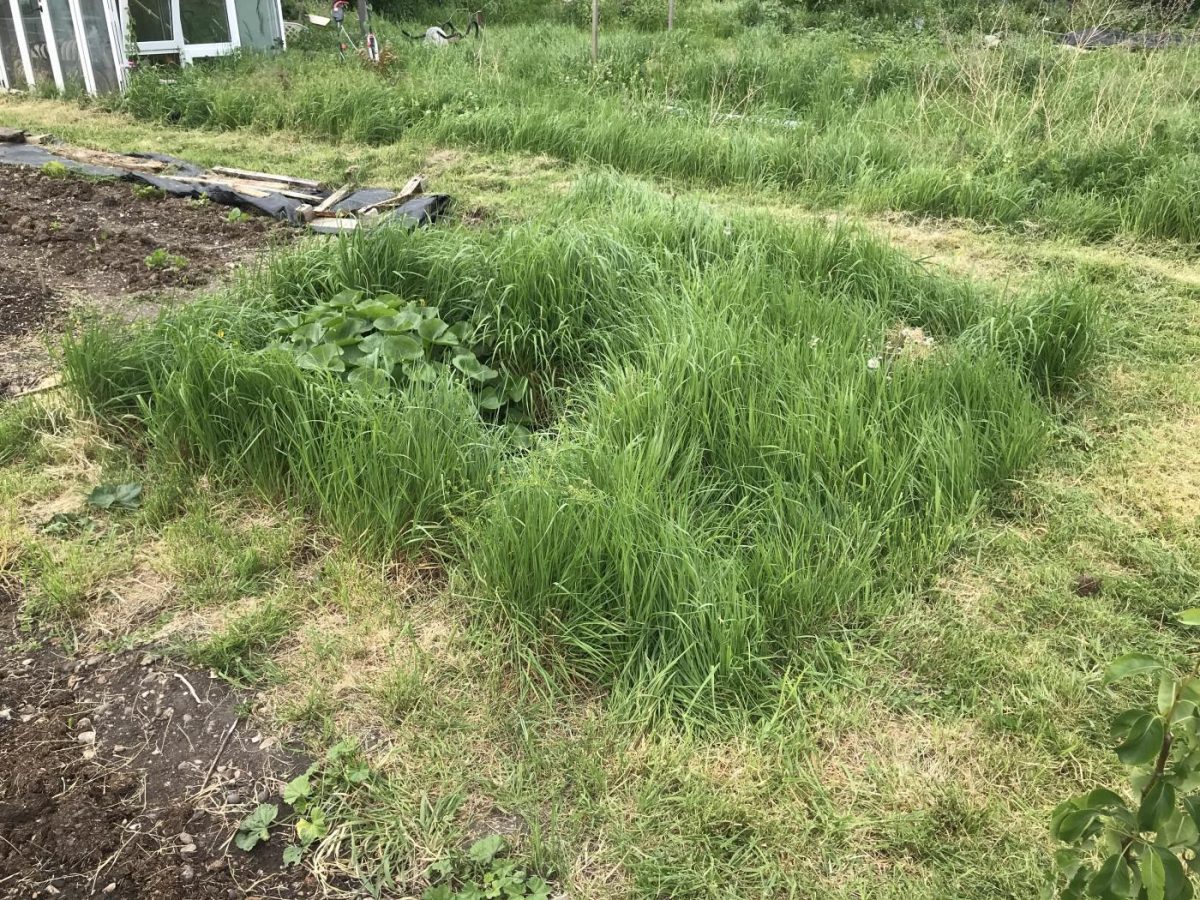
It’s not all about native plants as non-native plants can have wildlife value too, however native plants are very important. Many organisms have evolved with the plants in your area, better able to feed on them and, in some instances, only able to feed on them – perhaps only able to survive on one specific plant. On my allotment I have a mini meadow (shown above) which I am leaving to see what local weeds and wildflowers sow into it. This requires a little careful management in terms of keeping the vigour of the grasses down through timely cuts. And I have cheated a tiny bit because a wild carrot was growing a meter from it and I helped this plant jump the gap by sprinkling its seeds into the patch. Last year it was mostly grasses but this year I hope to have more flowering plants. All great habitat for insects.
4) Allow some edibles to flower

White tailed bumblebee, Bombus lucorum 
Black garden ant, Lasius niger
I’ve always allowed some herbs and vegetables to flower because I’ve been interested in what the plant’s flowers look like, also to collect seeds myself to use the following year. This practice also increases the number and diversity of flowers on your plot for pollinators.
5) Leave some pests
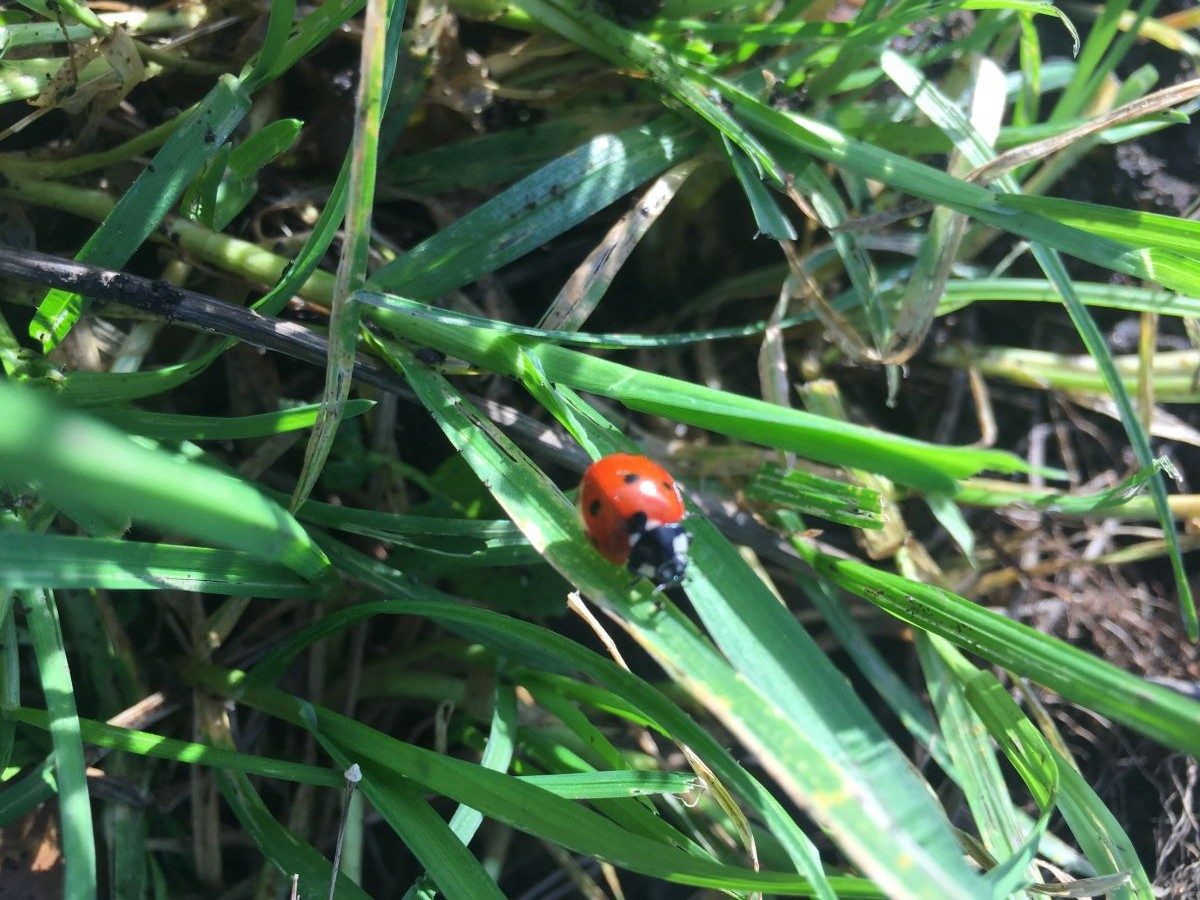
If you want to encourage beneficial insects like aphids, wasps and hoverflies, you need to make sure they have food to eat. Aphids are a pest of crops but I always leave them to it because I know that a broadbean patch full of aphids is soon going to be covered in these predators. While I do wipe off really bad infestations on single plants if things go too far, most of the time I leave them. In our garden at home, it has now completely balanced out and in spring when aphids arrive, they are soon vaporised by hoverfly and ladybird larvae. The allotment is almost at this state of equilibrium.
6) Add a wildlife pond (or two)
On my allotment I have a small 1m long x 50cm wide x 50cm deep pond in my native wildlife meadow. Although small, it attracts pond skaters, dragonflies, damselflies, frogs and newts. You can see how much frog spawn appears in spring! Frogs, toads and newts are helpful because they eat slugs and snails.
7) Grow ornamental flowers
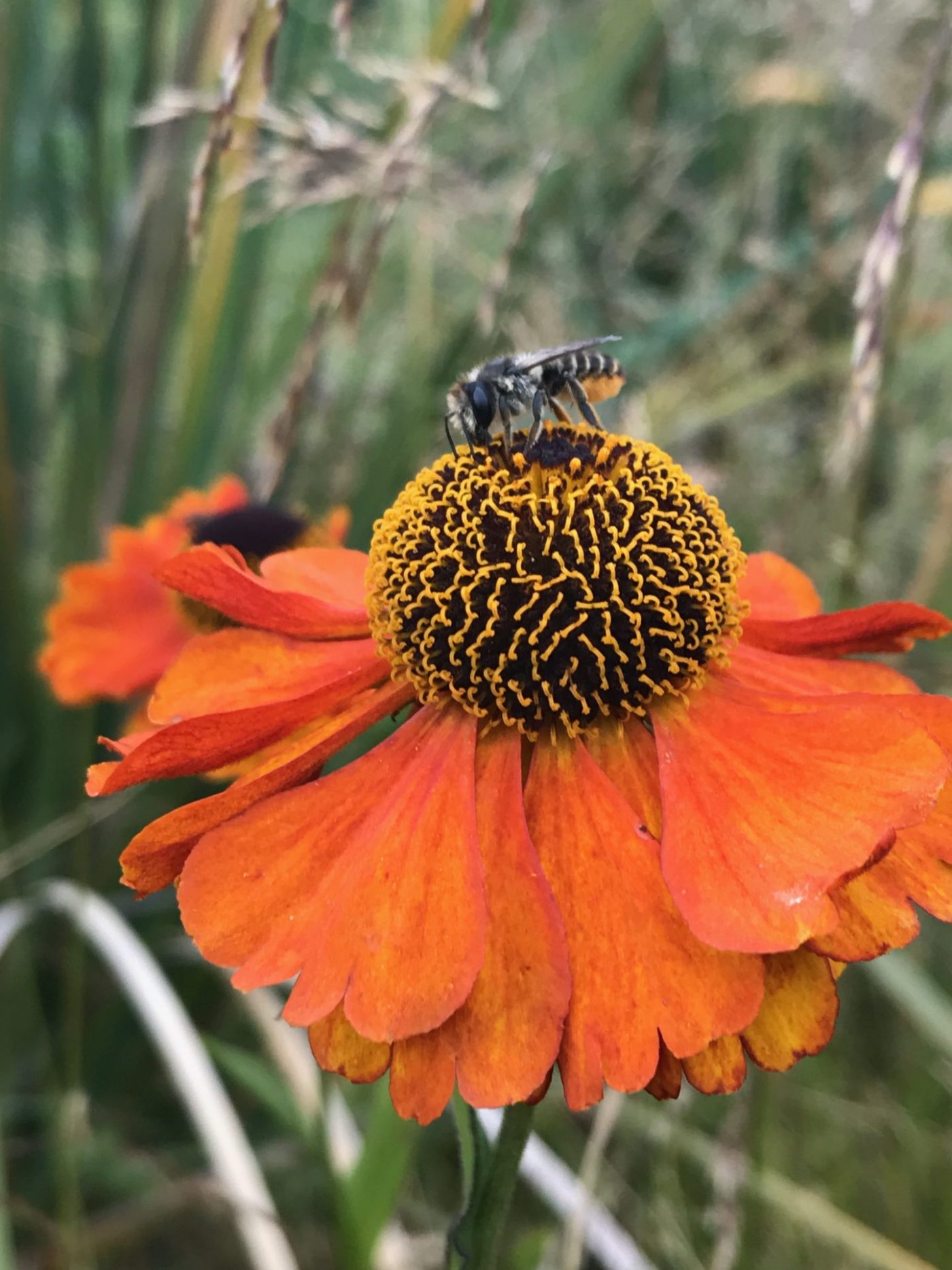
Growing native plants is vitally important and we should all do more of it but that doesn’t mean we should banish the ornamental plants we love. On my allotment I trial lots of non-native plants for design purposes, one of the criteria I look for is wildlife value. I’ve observed many non-native plants attracting a vast number of pollinators and leaf-eating insects. Grow some yourself in spots around the allotment, perhaps for cut flowers or just for you and the wildlife to enjoy.
8) Stop digging – protect your soil

No-dig is the practice of adding nutrients through a layer of mulch – well rotted compost or manure – to the surface of soil rather than digging in. As nature attests when you see leaf litter vanish in woodland over winter, soil organisms will incorporate organic matter into the soil for you. Not digging also helps protect natural structure created by fungi, worms and other life. Allowing your soil to live increases the amount of nutrients available to plants to the point you do not need to fertilise, only top up with organic matter each year. Again, like organic gardening so many gardeners now do this, proving it works. Personally, I have always practised no-dig, it seemed natural and worked – even before I’d been taught of the concept at the Royal Botanic Garden Edinburgh. I personally am not completely against some digging very occasionally, such as small scale to plant things or dig out potatoes because this slight disturbance also happens naturally in the wild. Keep it to a minimum though because not digging also protects homes of soil dwellers like solitary bees. Go no dig and you will see the soil life and plant vibrancy improve quickly.
9) Make your own compost
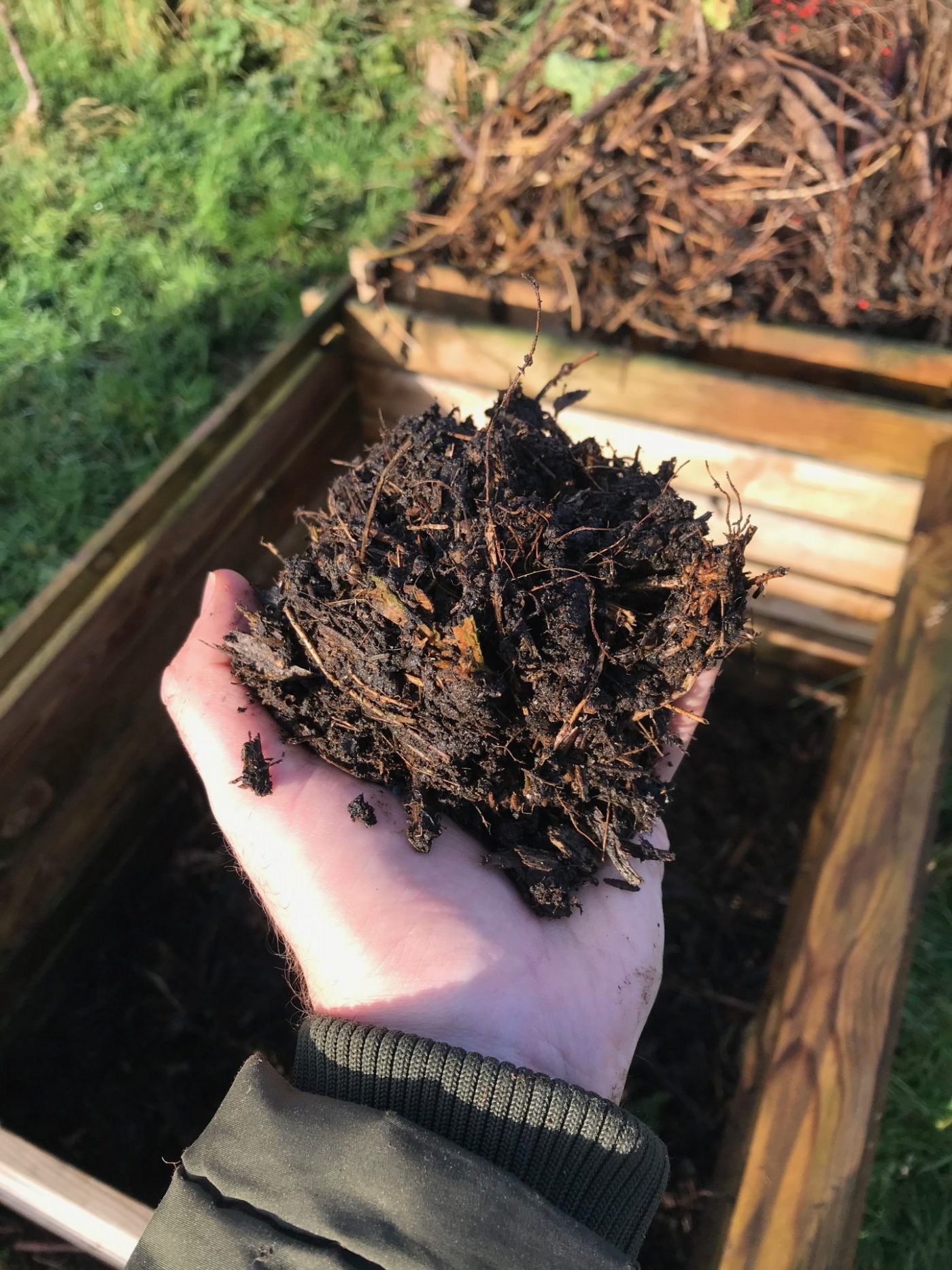
Is there anything better? I don’t think so. Making your own compost is fun and rewarding, like a long-term science experiment at school. The process of plant debris rotting down into usable compost never fails to amaze. Homemade compost helps wildlife in so many ways. First of all, like leaf litter in the wild, it instantly creates this type of habitat for centipedes, millipedes, molluscs, worms, beetles and – if you’re lucky – hedgehogs (making it important to check before shoving a fork in to turn it). Once ready to go onto your allotment, this beautiful homemade compost will then feed the soil organisms around your plot. Ensure the wood used for the compost bin is not treated, treated wood can kill fungi and bacteria which are important for rotting down the heap.
10) Only use peat free composts
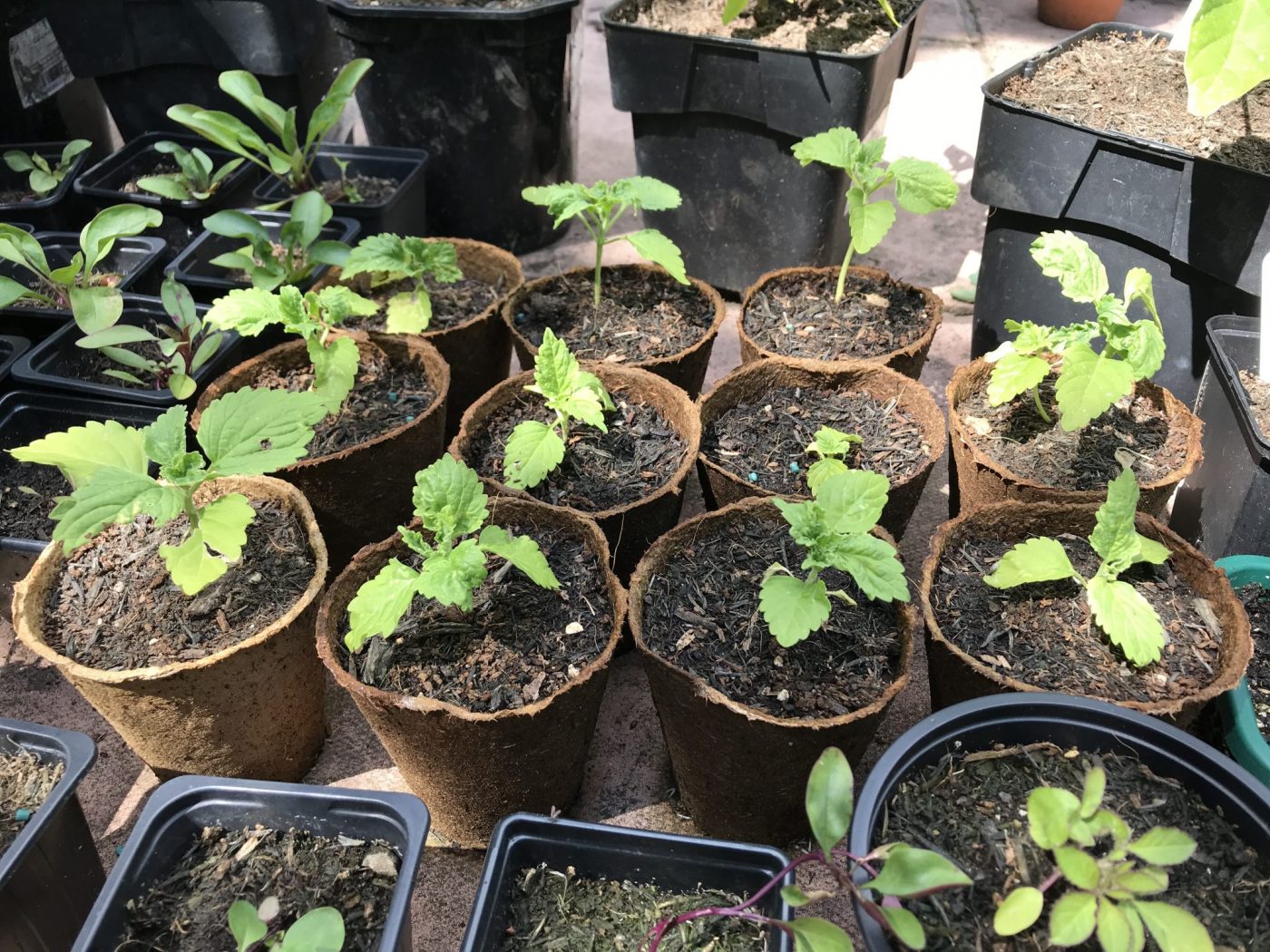
One of the most important things you can do to help wildlife is use peat free composts. Peat based composts are torn out of peat bogs, precious natural habitats that are also one of the world’s best natural carbon stores. Supporting the peat trade kills millions of animals, insects and plants in the wild each year. Again, many gardeners and public gardens are now peat free, proving this type of compost works. Everything I grow at home and on my allotment has been peat free for five years.
11) Discourage birds (bear with me)
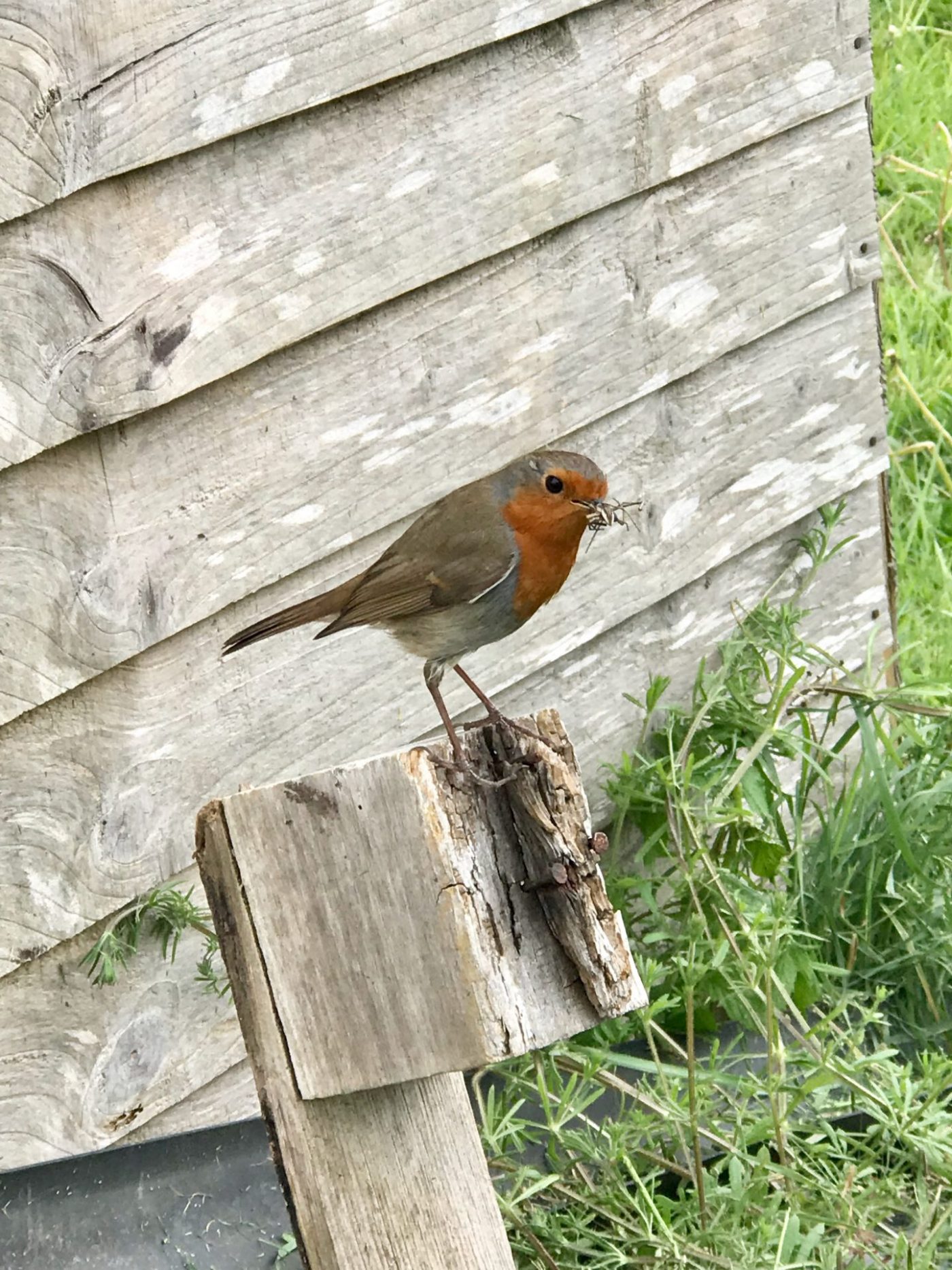
On my allotment I have a fair few flappy friends but – as much as I adore them – I don’t personally encourage them. Beyond the fact birds like pigeons eat your brassicas and black birds go for your raspberries, it’s not fair on them. Most allotments have a height limit that stops at your waist, allotments are therefore very open ground. To put food out for birds encourages them into the open at low heights making them sitting tits for predators. Predators, like foxes, stoats, polecats, birds of prey and even domestic cats often receive the blame for killing the birds we see when in fact, we are usually the problem (loss of habitat and insecticide use reducing food is the main cause of any bird decline in the UK). By luring birds into the open where we can see them returning to food stations again and again, means predators can too. Instead, work with your allotment committee to plant native tall shrubs and small trees on the perimeter of an allotment site using fruiting plants like hawthorn, wild cherry and spindle. This creates tall, dense habitat for nesting away from predators and a natural food source with it. If you want to supplement their natural diet, add feeders high up in this perimeter woodland hedge.
Most of all, have fun! Keep an eye out for wildlife and look at their habits, get to know them – make friends! For more updates from my allotment, join my weekly-ish gardening newsletter.

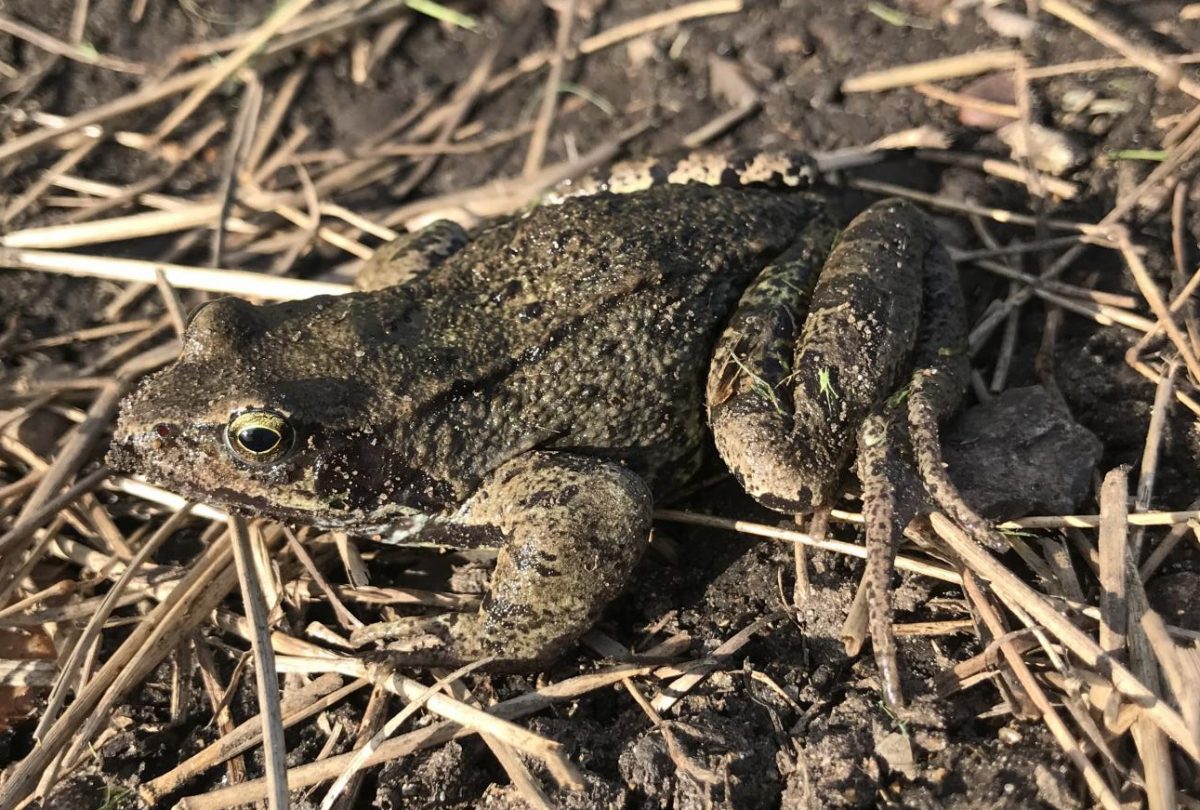
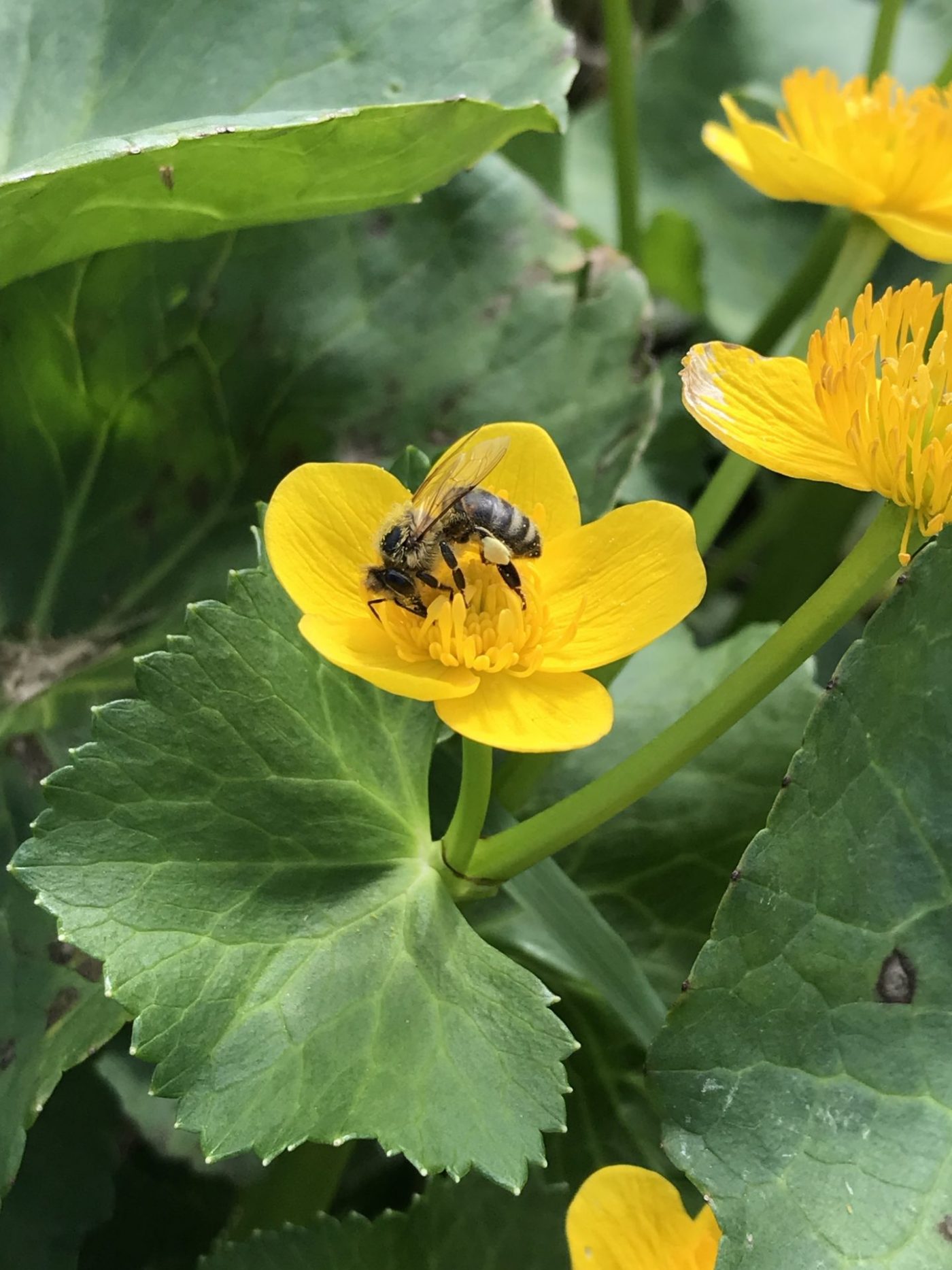

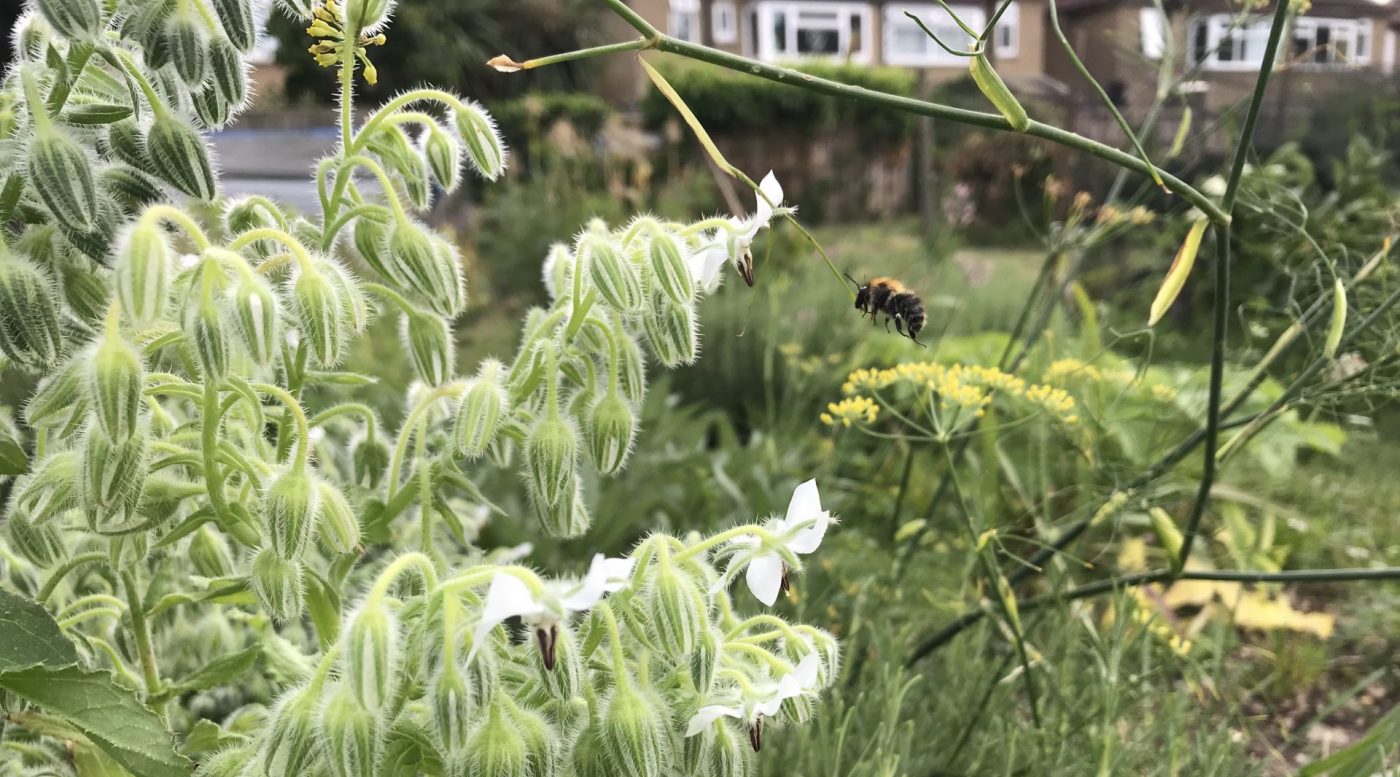


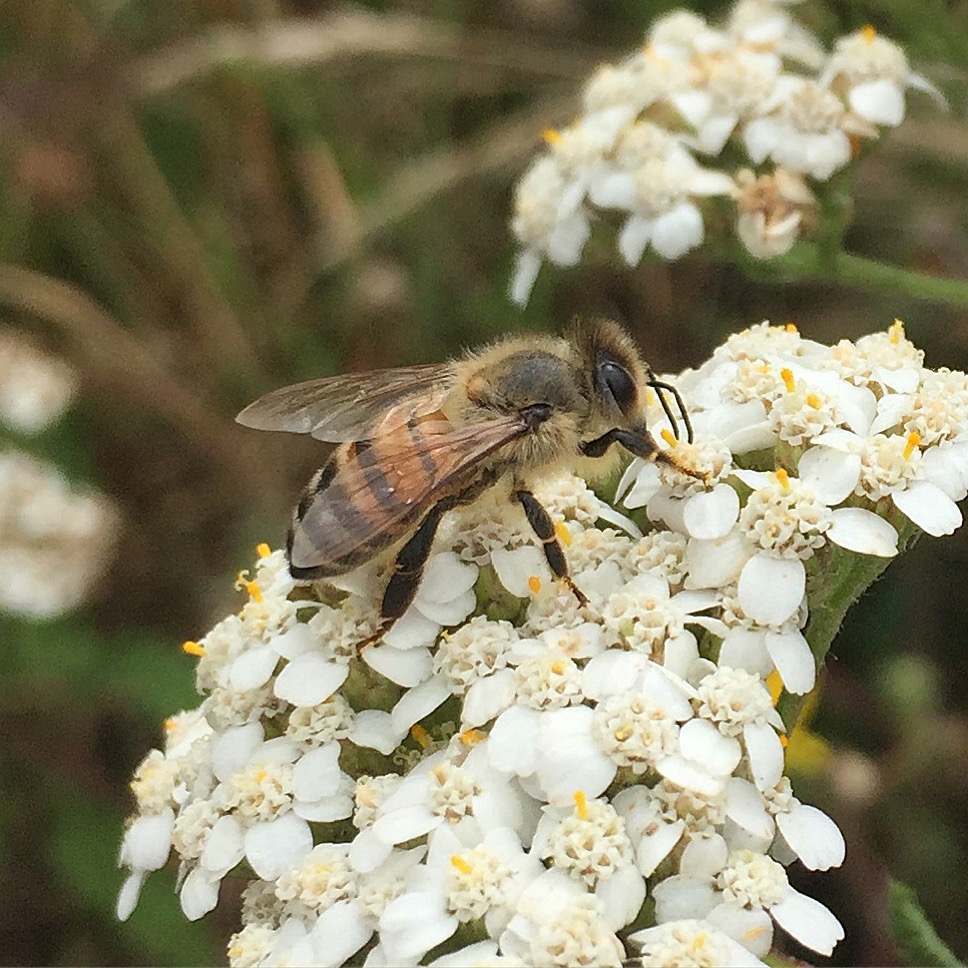
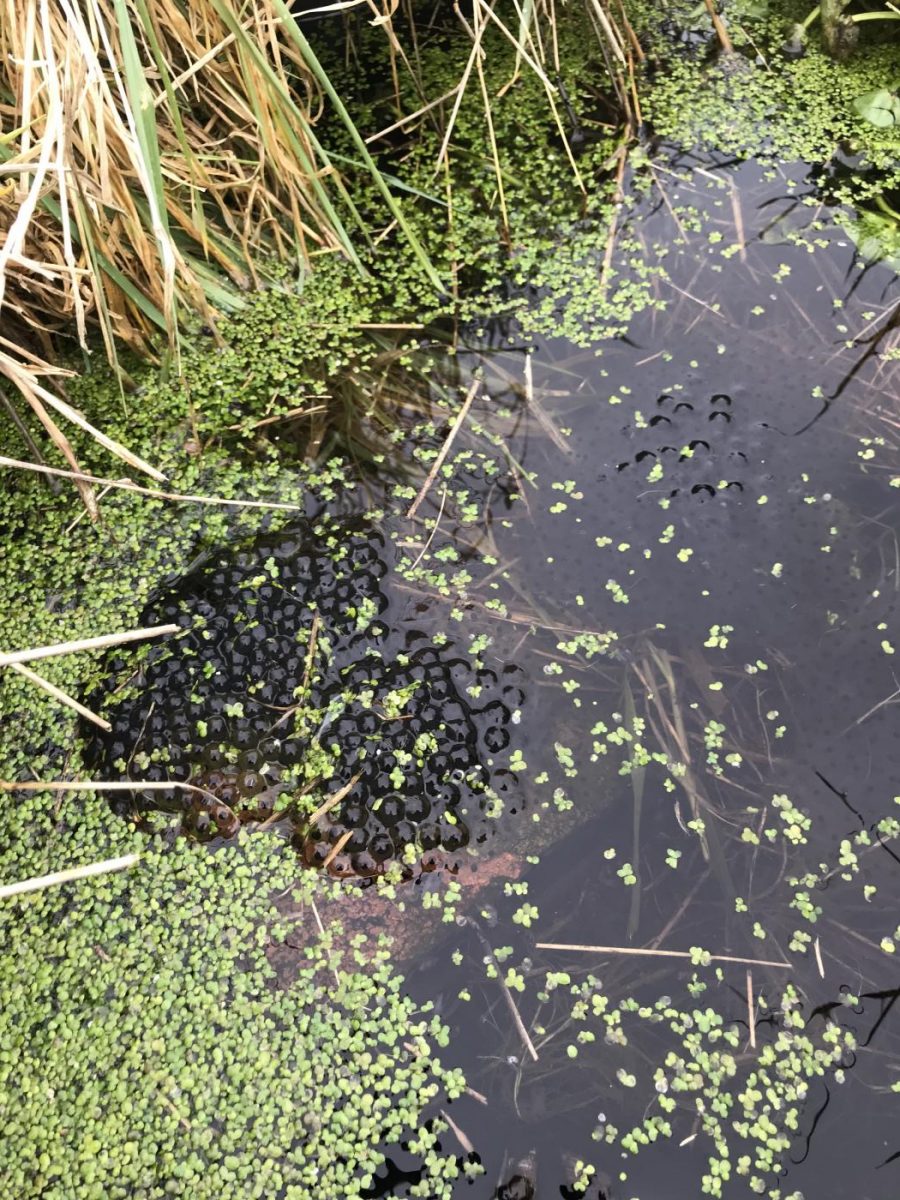
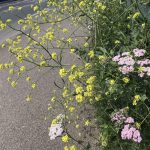
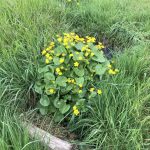
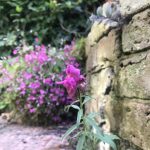
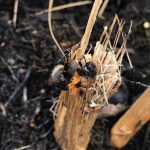
Hi Jack. Love your blog. Been so informative. I wondered if you could help a newbie allotmenteer please. I have just been given an allotment (half plot) which we have started to clear. It’s very overgrown but have made a good start clearing it. Last weekend when it was super sunny I noticed the large tree in the next plot cast a shadow pretty much over my entire plot. I know the sun will get higher but I’m not sure whether this will be a problem. There is one more plot available that up until recently has been used and has no shade, but it’s not as big. In your experience, would shade cause problems? Would I be better going for the sunnier plot? Thanks in advance. Kirsty
Hi Kirsty,
That is a toughie! I would always want as much sun as possible. Part of my allotment is shaded by a tree and it is reduced every few years to keep it under control which could be an option for you? Otherwise it might be worth seeing how it goes in the first year… if the other plot is only slightly smaller it may be best to switch.
Good luck 🙂
Jack
Thank you so much for taking the time to reply to me. Really appreciate it 🙂 Previously when it was a whole plot it probably wouldn’t have mattered so much. Thanks again!
Great wildlife info. People don’t realize how important wildlfe, some weeds and pollinators helps our society survive without chemicals and idiots who want to use them chemicals!!